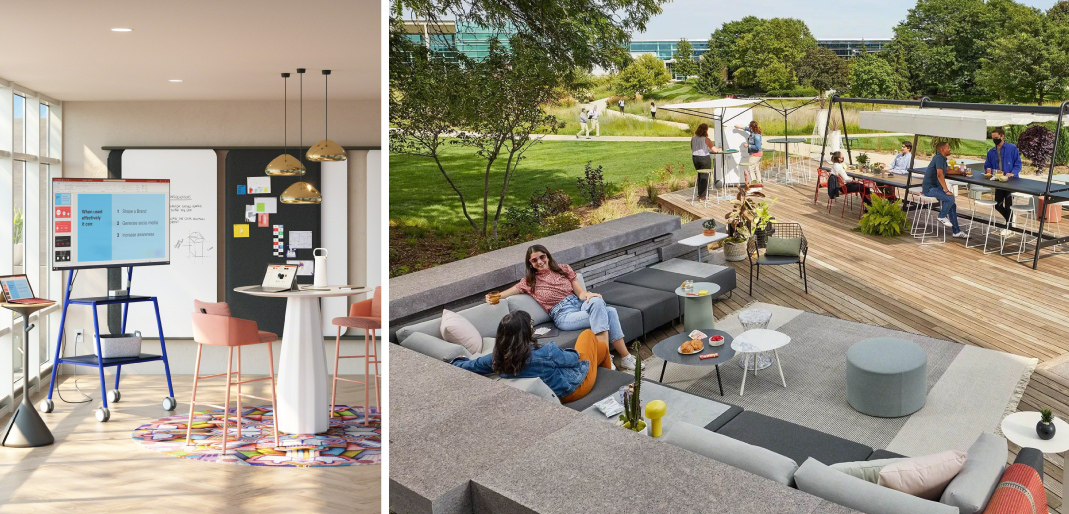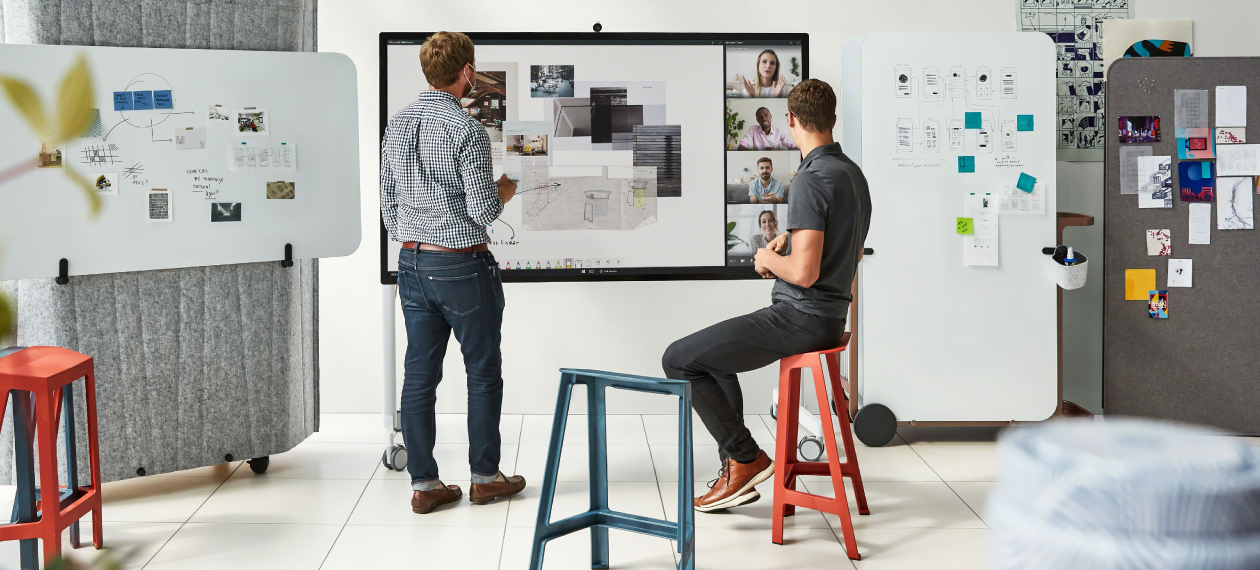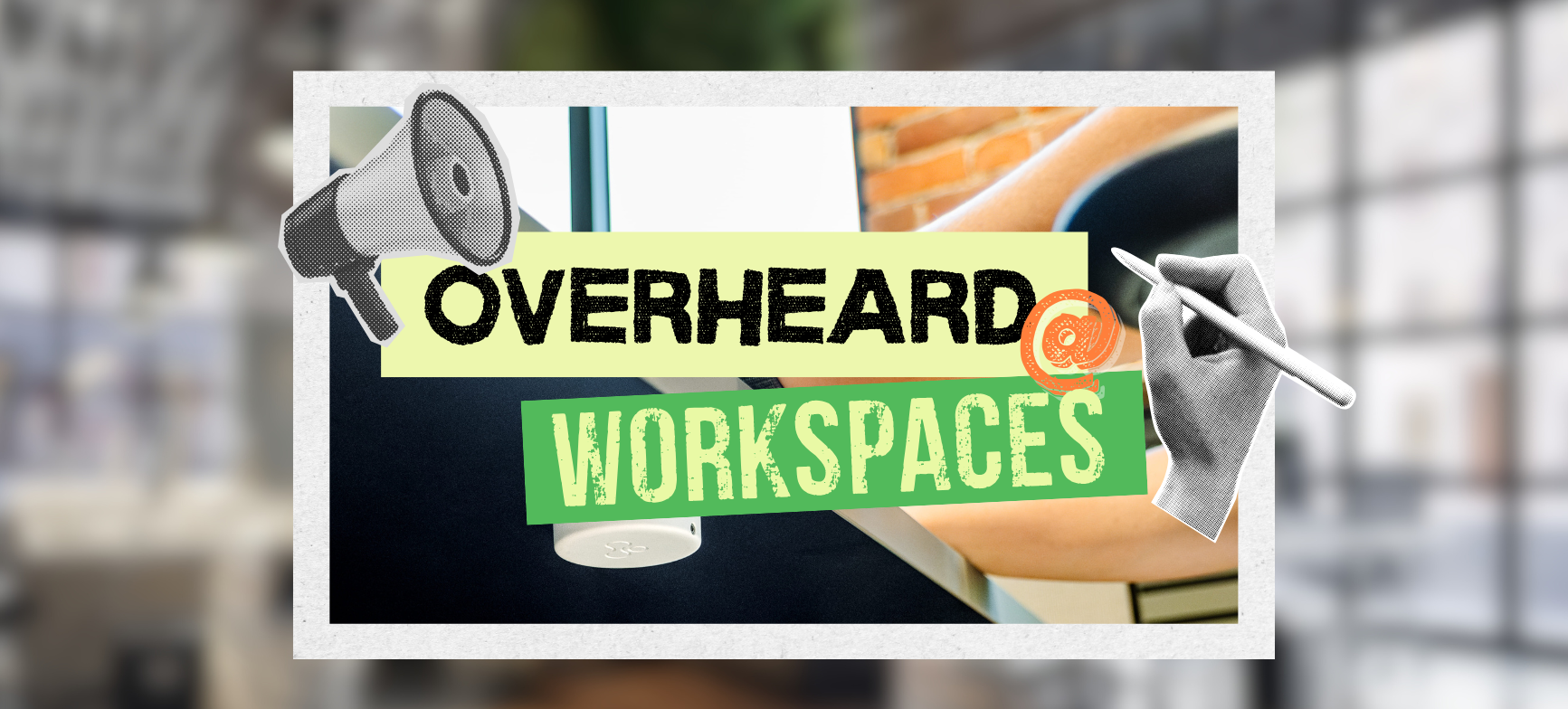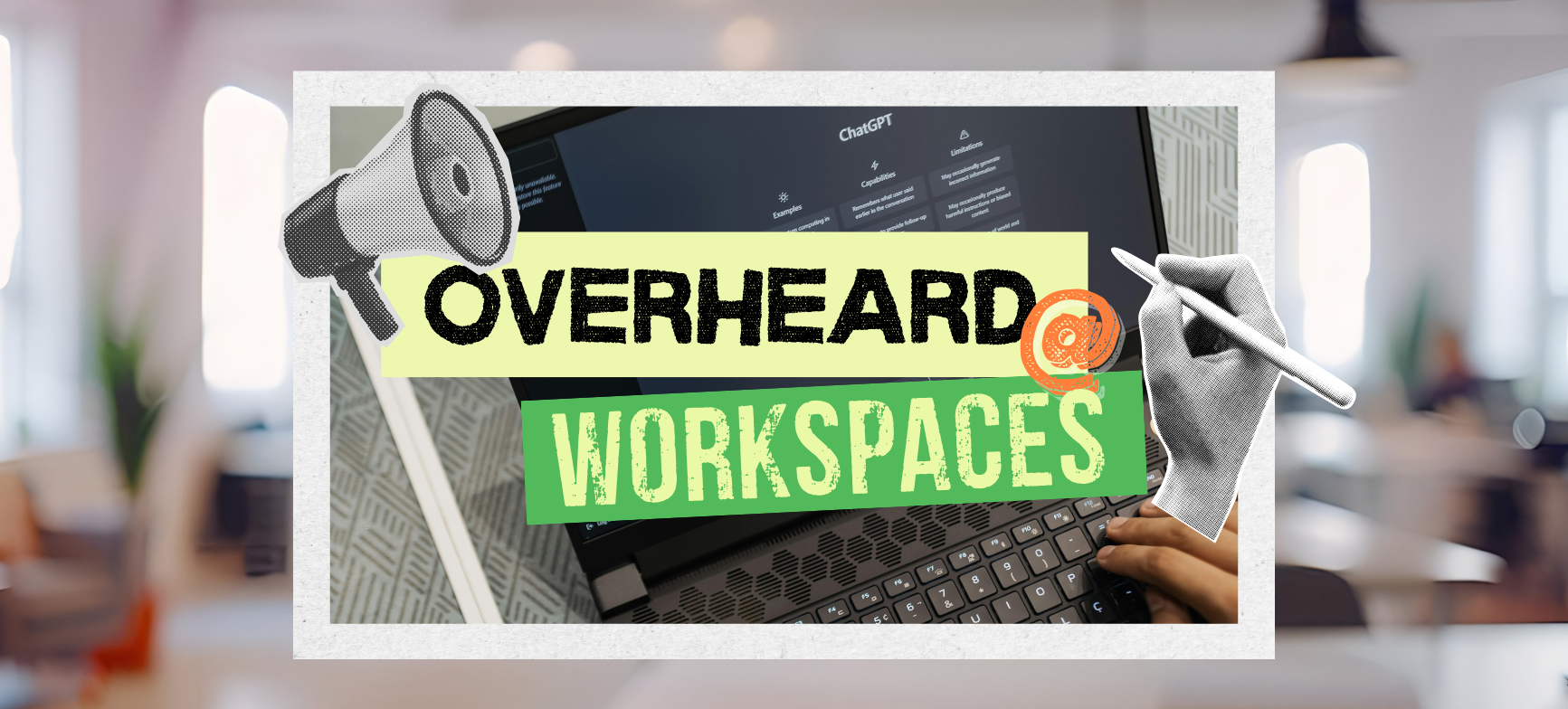One of the greatest challenges for companies adopting hybrid models is seeing the forest for the trees: the task is so multifaceted, the second- and third-order problems it raises are so all-consuming, that keeping track of the big picture can seem impossible. And yet the impossible is necessary, essential. “It’s very important for us to pop above that canopy, to get a sense of what is going on in this ecosystem today,” said Patricia Kammer, Principal at Steelcase’s Workspace Future Group.
As her title implies, Kammer’s job is to figure out what the future of work will look like and how workspaces can prepare for it. As companies around the globe have transitioned into hybrid office models over the last few years, her team has led research into what the future of hybrid looks like, which naturally involves looking at what the present of hybrid looks like. Through interviews with human resources experts in various sectors, Steelcase is developing a detailed tapestry of the approaches businesses are taking, the questions they’re asking, and the challenges they face. In a presentation at WorkSpaces, Kammer provided an illuminating glimpse into her findings.
Four Critical Business Factors
There is no one effective hybrid model, Steelcase’s research ultimately showed: rather, the model depends on the needs of each individual organization. Still, there are common concerns. As Kammer explained, companies moving to hybrid wrestle with two fundamental dynamics. The first—what people do and who they do it with—will generally stay constant no matter the model. The dynamic that gets redefined in the new paradigm, however, is where and how people do their work. “The importance of alignment is going to be critical now more than ever before,” she said, alignment referring to the delicate balance between people (or talent strategy), process (or information strategy), and place (or space strategy).
As organizations try to figure out the right hybrid model for them, they typically consider four critical business factors: whether they can maintain or preserve business continuity; whether they can control costs; how they can execute talent strategies; and how they can maintain culture.
Balancing all these factors at once is a hefty challenge, but sometimes the stars align, as with one company Kammer’s team heard from. “We were about to build a new building,” they reported, “because we were completely out of space. But guess what? We're able to save on our capital investment now, 'cause not only does it allow us to attract and retain the best talent, but we also can maintain that business continuity.” The company swiftly moved forward to hybrid.
One popular approach that emerged in the early days of the hybrid era is what Kammer called the 3-2 or 2-3 model, in which employees spend three days of the week at home and two in the office, or two at home and three at work. “Fundamentally, the reason that they're doing this is they're hedging their bets,” she explained. “By adopting this particular model, what happens is they're able to maintain their business continuity.”
Six Key Tensions
Whatever model they choose, organizations adapting to hybridity face six key tensions identified in Steelcase’s research:
Internal equity. As different employee profiles emerge, so do fault lines between those who are predominantly in-office and those who are predominantly work-from-home. “But it's not just between those groups,” Kammer stressed. “It's actually between the hybrid groups.” Workplaces using 3-2/2-3 models inevitably find themselves in situations where leaders fall out of alignment, making different decisions about the same processes. “That internal equity is causing tension among the teams, and it’s likely to continue,” she said.
Collective knowledge, which Kammer described as “the way in which information flows through the organization.” But it’s more than a matter of data systems and information architecture, she added; it’s also about “being able to identify the right person to talk to at the right time.” She offered the example of consultants who spend most of their time in the field: on their one day back in the office, they might plant themselves right outside a partner’s office, waiting to pick their brain or share some news. Maintaining this flow of knowledge will only become increasingly challenging as organizations adopt new models.

Photo credit: Steelcase
Intentional gathering. When workers only come in a few days a week, they’ll come with specific goals and expectations for their time in the office. This places an onus on the company to deliver spaces that meet their employees’ heightened needs, whether it be for meetings or intensive heads-down work. “We consider four work modes,” Kammer explained. “Focus, collaboration, social, and learning, and all of these have to be addressed… And so as we consider space, it needs to be multimodal and it needs to address all of those patterns.”
Visibility. “How many of us have had an experience where we felt invisible?” Kammer asked. “Oftentimes it has to do with presence, inequity. You're the lone person that's on the phone call and your voice is not heard.” Keeping employees visible and engaged in the hybrid era will take new processes and technologies, with a particular focus on ensuring that work-from-home employees receive the same advancement opportunities as those in the office.
“As we consider things like visibility, it's making sure that that person has active participation,” she said. “We're looking at the things like ease, equity, and engagement, meaning that that nomadic worker that's in the office needs to connect quickly to their virtual participant. It's looking at the difference between one person who you see from head-up, and the other person you see full body… inequity is not going to work.”
Building bonds. This tension lies less in the need for workplaces to provide for the heightened needs and expectations of employees—á la intentional gathering—than in the need to foster a shared culture amongst an atomized workforce. “This is a question around, how do you begin to support the building of bonds?” Kammer asked. “Many people call this culture.”
Whole person. At the end of the day, an organization is its people, and a whole, healthy organization needs whole, healthy people. This means workplaces need to give employees what they need to leave the office healthier than they arrived. “This is asking organizations to be sustainable, to consider that their resource of people is renewable” Kammer said. “This is asking organizations to be sustainable, to consider that their resource of people is renewable… It's really around thinking about spaces that ground people, that make them feel whole, and that make them perform at a high degree.”
Seeing the Forest
Managing these tensions may seem daunting, but companies that rise to the challenge will find themselves stronger for it. “I fundamentally believe that once we see that clearing in the horizon, what we have learned as we have forged through the forest over the last 18 to 20 months will make us better, will make us stronger,” Kammer concluded. “So that we can develop environments that not only are agile but actually support people in a compelling way to make the experience that much better.”

Posted by
Join us at WorkSpaces!
The retreat for corporate real estate and workplace innovators.
Oct 4-6, 2026 | Santa Barbara, CA




-3.png)
-3.png)


-2.png)

Comments